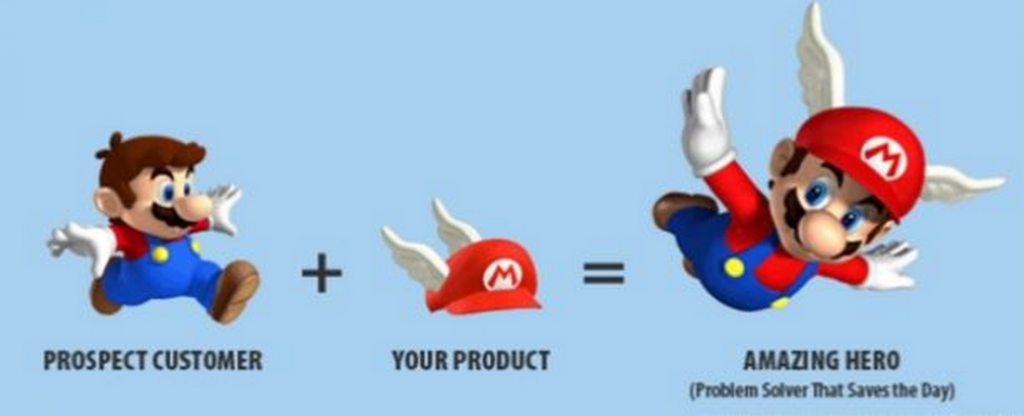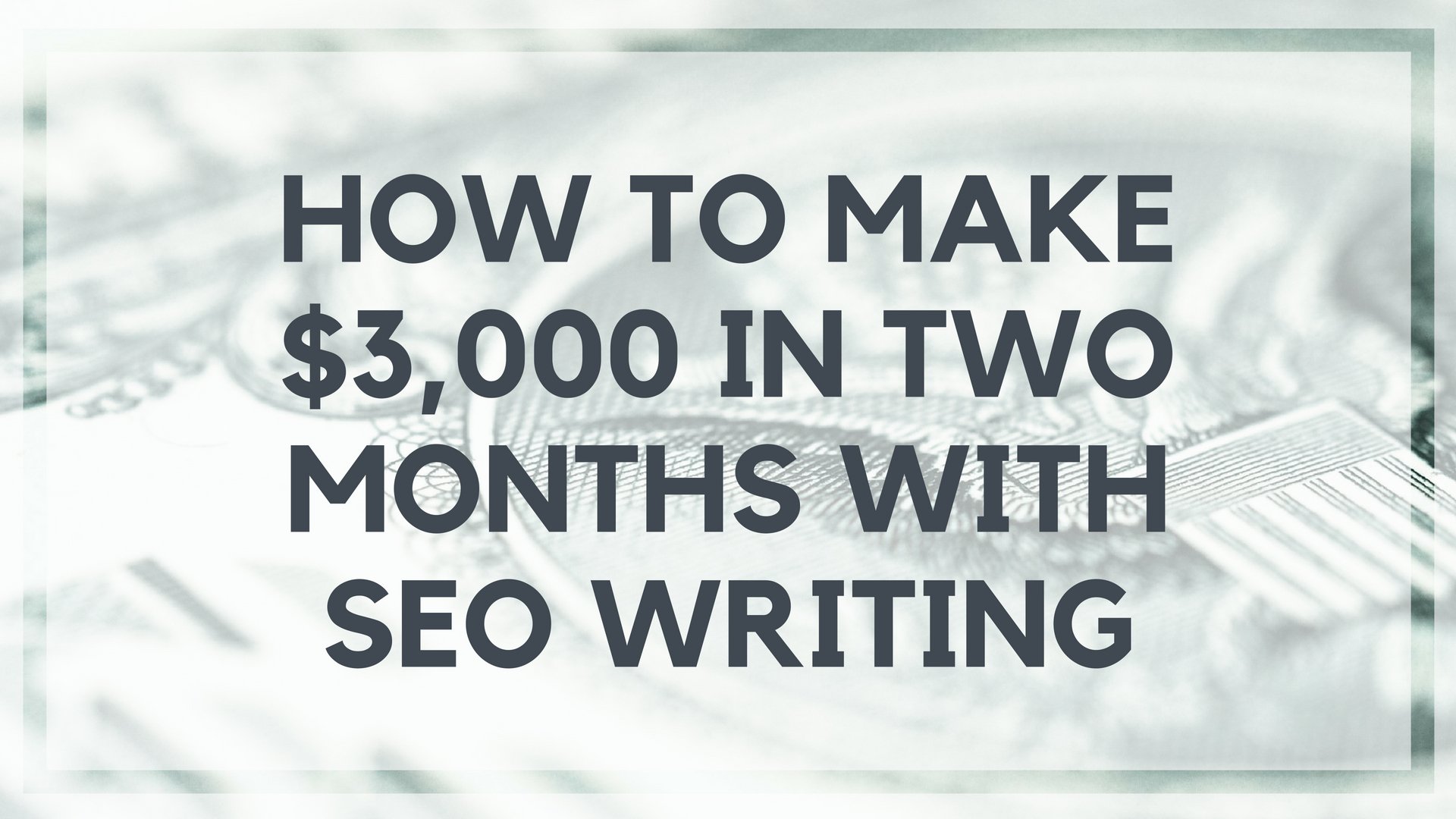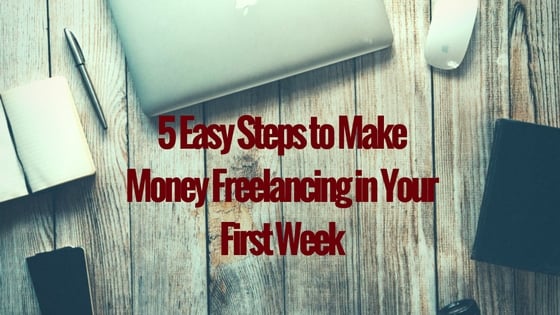Today’s guest post was written by Location Rebel Academy member, Brian Lenney. Brian joined our community last summer, and immediately got my attention through his enthusiasm for his new business….and also by leaving his job less than 2 months after joining the community.
He now helps clients build their brand by telling their unique story, and I’ve seen just how powerful story selling can be in my own business.
So I’m really excited to host him on Location Rebel today, because I know how valuable this concept is – yet it’s so often overlooked by people just starting out with their business.
Take it away, Brian!
—
So…this conversation happened last year:
Boss: Brian, I feel like…you should work at Google or something.
Me: Haha. What are you talking about?
Boss: Well, when you come into the office here, you have so much going on with everything else you’re doing, I feel like we’re holding you back.
Me: Nice insight. I actually have some ideas, lets talk…
That was the beginning of a conversation I had with my former boss a month before I quit my 9 to 5 marketing job and started my own copywriting business.
She brought it up one day because she knew that I had a lot of side projects and thought that maybe I should just start my own business (she was very entrepreneurial herself so she wanted to help me out).
She was right.
The weird thing was: I was going to bring up the exact same thing with her that week anyways. But I didn’t have to.
She could sense that there was more in my future than rolling up to the office at 7:57 am with a half-eaten gas station breakfast burrito in hand, ready to spend 8 hours helping her chase her dream.
She knew that I had dreams that needed chasing too. I didn’t want to spend 40 hours a week living someone else’s life anymore (and I don’t want you too either). So after my boss opened the door, I happily skipped through it.
We talked, plotted, and came up with a plan and I quit one month later with my former boss as my first regular client. It was a win for both of us. She saved money and got her marketing needs taken care of, and I got to quit my job, start my own business, and keep ⅓ of my income.
We were on the exact same page and I haven’t looked back since. That’s my story and you probably won’t forget it.
It’s not flashy but it sticks.
Story Selling: This Changes Everything
Why do you remember stories that you heard, listened to, watched, or read, even if it’s been years since you heard them? Why do those stick, but you can’t remember what the guy at the “How to Use Facebook to Build Your Business” seminar said last week?
What is it about a good story that makes it carve out a cubby hole in your brain and hang out there forever?
…American Sniper
…The Hunger Games
…Top Gun (I had to throw this in)
…Wall-E
…Saving Private Ryan
…Braveheart
…Lord of the Rings
…Anything by Quentin Tarantino
…Breaking Bad
People eat this stuff up. There’s nothing better than a good story. Period. And that’s why I want to re-introduce the concept of story to you.
Story has been used in politics, religion, culture, and media to shape nations, change lives, inspire courage, make war, reveal the divine, and oh yeah- to entertain.
Stories stick with you for years after hearing them…
- When Goose died in Top Gun.
- When Mikey met One-Eyed Willy in the Goonies.
- When my Grandpa watched the ship in front of him get bombed by the Japanese and sink to the bottom of the ocean in WWII.
For example, I used to go to a church where the pastor preached incredibly uninspiring sermons every week. I couldn’t remember most of what he said even an hour later – but I remembered (and still do years later) most of his stories.
Because of science (yeah, I pulled the generic “science” card) I can confidently say that you’ve had the same encounters with stories in your life.
Do this right now: write down at least 10 stories you’ve heard over the years that changed you, altered your life, or won you over.
Pretty easy to do right?
You already know that stories work in media, religion, everyday life, and politics.
So why not use them in marketing?
The Psychology Behind a Good Brand Story
In a very insightful TED Talk, Filmmaker Andrew Stanton (who wrote Finding Nemo, Bug’s Life, etc.) talks about the purpose of stories. He says that “the greatest story commandment [is to]…make me care.”
Stanton says that the point and purpose of a great story is to “create wonder,” by making people say, “me too!” People need to see themselves in your story to identify with it and care about it. By creating “me too” moments, you’re letting people know that you get them.
To tell a good brand story you need to humanize it:
“If you can define the problem better than your target customer, they will automatically assume you have the solution.” -Jay Abraham
I love this quote, because it’s true. When you can completely relate to your audience, understand them, empathize and speak their language, you will naturally become one they are attracted to.
“Great copywriting, for example, incorporates “me too!” moments all throughout a single piece. From the headline to the bullet points and the testimonials, target readers of great copywriting are always saying “Yes! Me too!”” – Pat Flynn
By telling a story that intersects with your audience’s self-narrative (i.e. the way they see their own life) you’ll gain trust, and an audience. Home Depot did this with their old brand motto, “You can do it. We can help.”
They told the customer that Home Depot could help them become a better version of themselves. They empowered the customer (YOU can do it) and tied their brand and their customer’s story together perfectly by saying, “we can HELP.”
They didn’t try to take over or change the customer. Instead they decided to take what the customer would already be doing (e.g. building a wood shed) and give them what they needed to help them do it better.
Angie Schottmuller put up a super helpful piece on visual marketing on Slideshare where she captured this concept perfectly with this image:
Someone I personally know who does this very well is Sean Ogle. In fact Sean’s story is the reason I signed up for Location Rebel in the first place.
When I read about Sean’s last day at his office job (<-open this in a new tab and read it after you’re finished here), I found myself saying, “Me too! This guy gets it! He is doing what I’ve wanted to do for years! I think I can do it too!”
He told stories that created several moments of activation in me, that tied in with my self narrative (I wanted to be my own boss). These neurological triggers eventually led to me signing up for Location Rebel and quitting my job a month after joining.
This should be the goal of every brand:
To connect with your audience emotionally, and lead them to action.
Who else is doing this well?
Apple.
People don’t wait in line for a new iPhone for 2 weeks or sleep inside sealed garbage bags because it has a Facebook app or cool calendar on it.
Every smartphone has that…
…it’s not about the iPhone.
…it’s about the brand.
They stand in line because Apple created a brand that people identify with and want to be attached to. People want to be seen sleeping in line. They want to be identified as cool and sophisticated – that’s the Apple brand.
Apple has mastered the art of storytelling and as a result they’ve built a multi-billion dollar business that’s just killing it in their market.
So how do you craft your story in a way that makes people identify with it?
What’s going on in the brain when you tell a good story? What type of language should you use?
Let’s talk about it.
Join over 40,000 people who have taken our 6 part freelance writing course. Sign up below and let’s do this together.
By entering your email address you agree to receive emails from Location Rebel. We'll respect your privacy and you can unsubscribe at any time.
Making the Brain Light Up
When you read, hear, or watch something that is purely informational (like an advanced calculus lecture), the language processing part of your brain lights up.
It’s called the Wernicke’s and Broca’s area.
This just means that you’re taking in information.
But when you encounter a good story that utilizes emotive language and imagery, your brain lights up like Cheech & Chong. According to Neuroscientists:
“Brain scans are revealing what happens in our heads when we read a detailed description, an evocative metaphor or an emotional exchange between characters. Stories, this research is showing, stimulate the brain and even change how we act in life.”
When you hear something that involves action (e.g. “Jenny leaped over the policeman”) your motor cortex, which coordinates your body’s movement, becomes active.
When you hear or read or see something that describes the physical texture of an object (e.g. “Rico’s pick up lines were as smooth as glass”) your sensory cortex, which helps you perceive touch, is activated.
When you read or hear words that have to do with a smell (e.g. Bob’s was a manly man who always smelled like freshly cut pine) your primary olfactory cortex gets activated. This area of your brain deals with smells.
Ok Mr. Scientist, what does that have to do with a brand story?
When I was in high school, I was on the wrestling team. Our coach always told us to “visualize our moves” and “mentally practice” when we were at home or not able to make it to training. He said that it would help build muscle memory and improve our technique.
Well, he was right.
Scientists have discovered that your brain doesn’t distinguish too much between real life and imagined scenarios. You probably remember a dream or nightmare that felt real and stuck with you the whole day after you woke up right? The same regions of your brain that light up in “real life,” light up during fictitious encounters (a movie, book, story, etc.) also:
Scientists call this capacity of the brain to construct a map of other people’s intentions “theory of mind.”
“Narratives offer a unique opportunity to engage this capacity, as we identify with characters’ longings and frustrations, guess at their hidden motives and track their encounters with friends and enemies, neighbors and lovers.”
So what kind of language are you using to tell your story…
…on your website?
…with your social media platforms?
…during your sales conversations?
…on your phone calls?
More importantly…are you telling a story or just giving out information?
What Does a Good Marketing Story Look Like?
“The story we tell ourselves is actually what is being sold. The challenge is not how to be successful, but how do we figure out how to matter. And the way we matter is by connecting with people with a story. A story that resonates, a story they care about and a story they’ll tell other people.”
When I talk about “story,” I’m not necessarily talking about the “Once upon a time…” framework. This is a bit more intricate. A good story, like a good building has to be planned.
It has to be intentional.
There are several ways to tell a brand story but the framework I’ve stumbled upon that I think really nails it is the one that Donald Miller lays out in his book, “How to Tell a Story.”
Miller is a master of story and he suggests laying things out in a very particular way when thinking through your brand story.
According to Miller (and I agree), every great story contains the following elements:
…a character
…a problem
…a guide
…a plan
…a call to action
…a result: comedy (happy ending) or tragedy (a not so happy ending)
Think about your favorite book or movie and walk through those elements in your head. Are they there? Every good story that has ever been told has those elements in place.
Take “Schindler’s List” for example:
Schindler (a character) was a selfish businessman who joined the Nazi party to get more business out of them. Not altruistic at all until later in the story, Schindler eventually decided to help rescue Jews from the Nazis but he wasn’t quite sure exactly how to do it without getting caught (a problem). 
He met with and later employed Itzhak Stern (a guide) who drew out the human side of Schindler by helping him come up with a way to rescue Jews from the concentration camps. His idea was to recruit them to work in Schindler’s factory 9by bribing Nazi officials) which would end up saving them from the death camps (a plan).
Stern explained this to Schindler and begged him to put the plan into motion (a call to action). If they pulled it off, the result would be the saving of over a thousand lives (comedy). If they did nothing, nobody would be saved and the weight of that guilt would rest on their conscience forever (tragedy).
It works in movies, books, and not so shockingly, marketing. So when you’re crafting YOUR brand story, be intentional about it.
If you’re still not sold on using a narrative type framework in your marketing; maybe a short example would help:
I’m sure you’ve heard of Dollar Shave Club. Their razors aren’t over the top fantastic or really, that much different than other quality razors you can buy in the store but they’ve created a story and a brand and are doing very well because of it.
1,565,934 Facebook likes & 57,300 Twitter followers tell me one thing: they know how to tell a good story.
Here’s how their brand story plays out using Miller’s framework from above: A guy or gal (the character) needs to shave. They also need good razors, and they want to save money. But it’s a hassle to go to the store, a lot of razors are overpriced, and security is so tight on them, they can actually be physically difficult to purchase (a problem).
Enter Dollar Shave Club (a guide).
Dollar Shave Club has a solution for the character – they’ll deliver good quality blades to the customer’s house for only $1 a month (a plan) which will solve all of the problems the character is faced with (i.e. shaving, cost, quality, and convenience)!
After laying out their plan, Dollar Shave Club asks people to sign up and get started right away (a call to action). At this point, the character/customer has two options:
- Sign up and save time, save money, and get good quality razors (comedy)
- Don’t sign up, waste time, spend more money, get subpar razors (tragedy)
It really is that simple.
It’s nothing new.
Just like:
…Me
…Dollar Shave Club
…Apple
…Schindler
…Sean Ogle
…you too have a story to tell.
My admonition to you is pretty basic: stop marketing and start telling stories. When you do it right, do it well, and do it consistently, you’ll start to see an audience form, a brand developed, and people will be happily give you their money.
People don’t want to hear about your product, they want to hear your story.
So go tell it.
—
Brian Lenney is a full-time online entrepreneur who spends his time helping brands tell their story and is also a financial copywriter.
Sean Ogle
Sean Ogle is the Founder of Location Rebel where he has spent the last 12+ years teaching people how to build online businesses that give them the freedom to do more of the things they like to do in life. When he's not in the coffee shops of Portland, or the beaches of Bali, he's probably sneaking into some other high-class establishment where he most certainly doesn't belong.Join over 40,000 people who have taken our 6 part freelance writing course. Sign up below and let’s do this together.
By entering your email address you agree to receive emails from Location Rebel. We'll respect your privacy and you can unsubscribe at any time.




Brian,
I love how easy you make it sound.
This is something many of us struggle with and I think that there’s always room for improvement.
Thanks for sharing this with us!
Thanks Jossif. While the concept(s) are easy to grasp, the implementation is a bit trickier but literally, anyone can do it. It just takes dedication, and intentionality and it’ll just start to fall in place. Glad the post was helpful Jossif.
Awesome post Brian, storytelling is so important and you nailed exactly why.
Thanks Liz!!
I love this post and think it offers great insight. I particularly like the quote:
“If you can define the problem better than your target customer, they will automatically assume you have the solution.” -Jay Abraham
Great insight.
-Tara
I love that quote too 🙂
Abraham is a genius right? Such a common sense type observation but also insanely insightful.
+1 . I’m also going to try the framework you gave Brian. Great stuff!
Awesome post, you got me. You tell a good story and you have me following the details of your recommendations like me digging for gold with a map in hand.
I knew there was a reason I liked Brian from the get-go.
Not only did he have the skills to hit the ground running, but dude knew how to craft a story and turn a phrase.
These details matter. Tons of people have similar skills…hello Internet! But, if you can tell a better story, that engages people you’re talking to – playing to the “narrative bias” we all have as humans…
You’ve already won.
Hey Abe if you find some gold, I get a 15% referral fee 😉
Damn Mike, thanks. Remember when we had that consulting call right in the beginning? You were part of my initial shove out the door. Thanks for the overly kind words mi amigo.
Just a note. LinkedIn now allows any member to publish a post, if you feel you have an audience there, or wish to create one on that platform.
Great post Brian. I love the home depot and dollar shave club examples. I’ve heard this concept many times but had a hard time wrapping my head around it. These examples show just how a company can use a story to make using their solution the obvious answer.
I love the way you put that Bill. When you make your solution the obvious answer, money takes a back seat and value is what people are buying. Its also really cool when you start looking at everything (e.g. media, advertising, etc.) through story you start to see the elements pop out at you!
Thanks for taking the time to do this blog . Extremely helpful. Love and blessings !
Excellent topic, and excellent framing of the subject in an actionable way.
Similar and worth sharing, I took a story approach to a site I designed last year for the testimonials section.
Rather than do the usual rounded Facebook pic and single line quote about the company, I wanted to envision the testimonials section and product offerings themselves as long form stories.
For testimonials we brainstormed a customer’s story as a movie and titled it as such, accompanied by custom photography the subjects had agreed to do.
The customer is extremely pleased with the results and at its root – story.
Jon I love that! That’s the kind of stuff that people WANT to read. Way to think outside of the box for sure. Great work!
In my opinion, having a brand story is very important. Most of the successful entrepreneurs and CEO use the power of story telling to encourage their employees.
The foundation on which a brand is built is very important. If the brand is built on a story then, it’s important to highlight it. A story has the power of capturing people’s imagination. That’s why it’s so powerful.